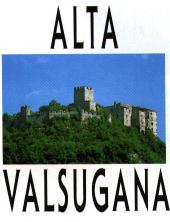

The Levico and Caldonazzo lakes and their effluent, the Brenta mountain torrent
that flows down to the Adriatic sea, influence the microclimate of this valley
in which constant humidity gives the vegetation a special green colour.
Valsugana, one of the most important valleys in Trentino from a historic point
of view, is surrounded by the Folgaria, Lavarone, Luserna and Vezzena highlands
and the southern slopes of the Lagorai mountain chain.
For centuries it has been the natural exit towards the extremely important and
strategic road for commercial and tourist traffic.
The capital of the upper part of Valsugana is Pergine, the third largest town
in Trentino, lying at the foot of a medieval castle, rich in buildings
contructed during the Reinaissance period.
From Pergine the road winds through Valle dei Mocheni, a green alpine corner
set among the mountains with a natural and urban environment of great interest.
The valley still preserves the original language and customs of the German
population who settled here in the Middle Ages.
A few kilometres away, Lake Caldonazzo has become a tourist resort of great
importance and not anly for Valsugana. On the shores of the lake many modernly
equipped campsites host tens of thousands of tourists every year, mostly
Belgians and Dutch. Many hotels and apartments are also available.
Similar attractions, such as sailing and windsurfing schools, exalt the tourist
offer of the other nearby lake of Levico. The village, lying on the shores of
the lake, has been renowned as a spa resort since the dawn of tourism and was
patronised by the nobility in the late nineteenth century, as were Roncegno and
Vetriolo where other sources of mineral water flowing from the Lagorai rocks
boast curative proporties.
Lakes and plains, but also mountains. Panarotta is a natural balcony over the
whole of Valsugana, a captivating viewpoint towards the Folgaria and Lavarone
highlands, Vigolana and Trento itself.

